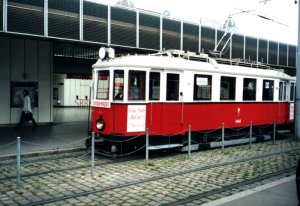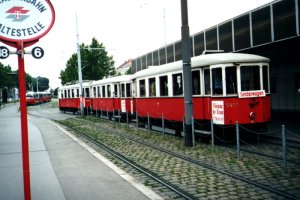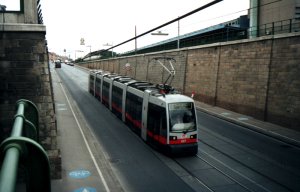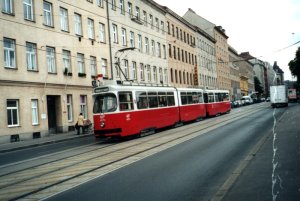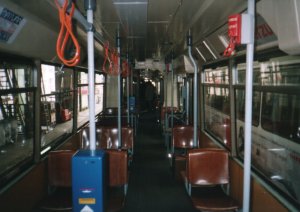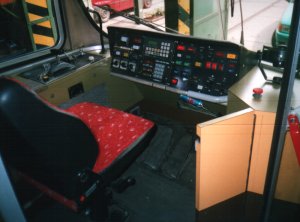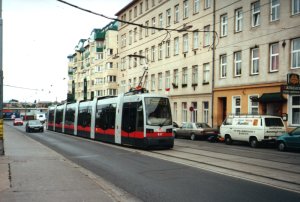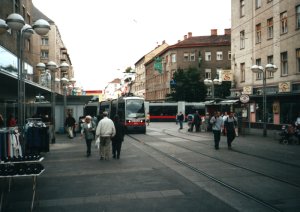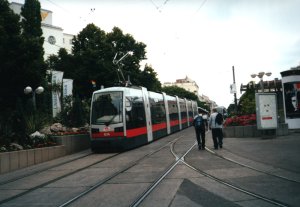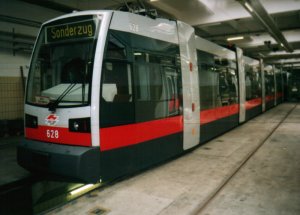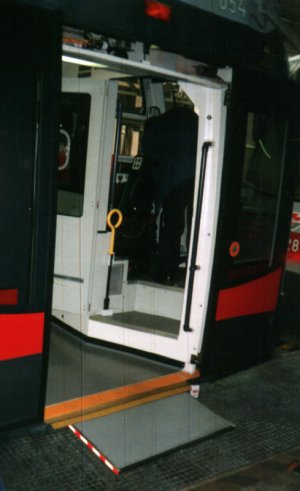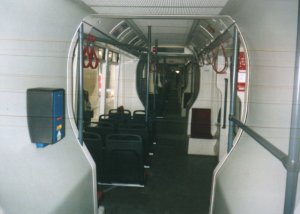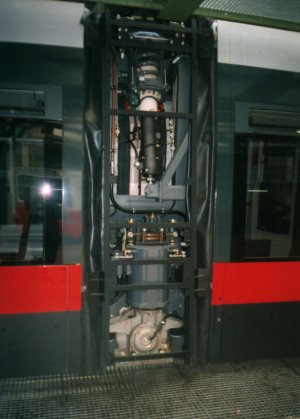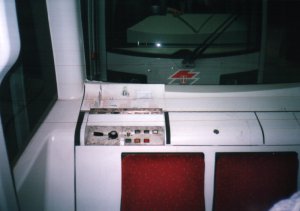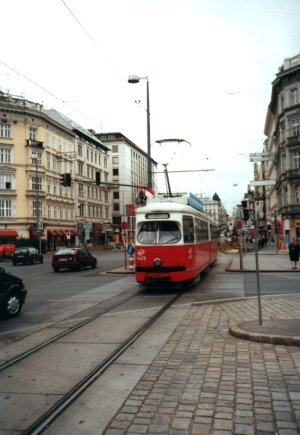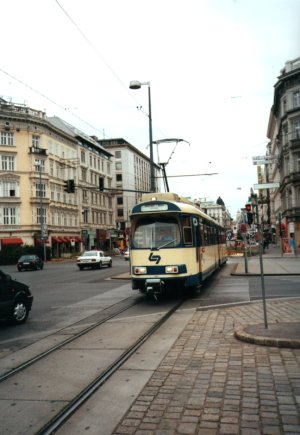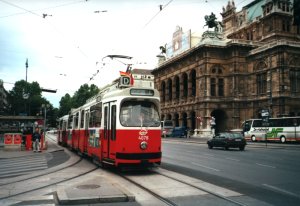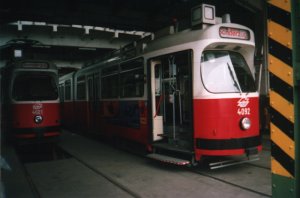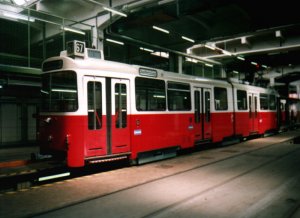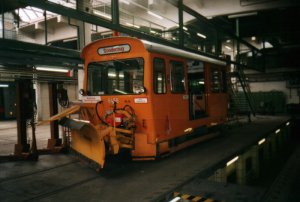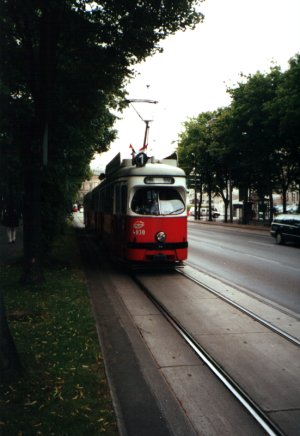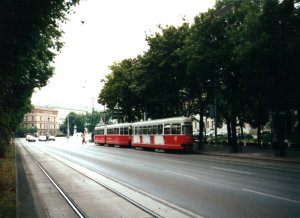budapest
other hungarian
close-up
lost rails
other countries
... with a confession and an apology :-)
I have a confession to make. For two and a half decades I thought about trams in a very selfish and almost chauvinist way: there were trams in Budapest, and there were "some vehicles running on rails" in cities elsewhere. This might had something to do with that fact that Budapest has had a very interesting and colourful tram life when I was a child (more than 10 types were in service on 39 normal and 16 special (peak-hour or night) routes!), while most of the other cities I visited had cars that looked almost the same: cities in the former eastern bloc had Tatras and german cities had their own kind of tram (mostly DÜWAG's as I found out later) - there was no big variety. This resulted in me almost completly ignoring the trams of Osiek (Eszék), Zagreb, Sarajevo (in 1986, long before the war), Prague, Kosice (Kassa), Dresden, Leipzig, Rostock, Schwerin (in 1987 when these countries were still part of the "communist bloc" and had some interesting vehicles), Vienna, Graz, Linz, Cologne, Bonn, Munich, Frankfurt am Main, Düsseldorf, Brussels, Gent, Antwerp, Liege, Oostende, Amsterdam, The Hague, Utrecht, and other places I've been to. Okay... that's not exactly true: I noticed their trams when I was there, and I even liked some of them, but I didn't feel any urge to get to know them better.
It was until a business trip to Vienna with a few spare hours on my own, when I realised this approach was rather silly if not sick: I finally noticed that other cities also had nice streetcars and interesting routes to ride on! (To tell the truth: the rolling stock and route network of Budapest became rather boring by then) Of course I was quite angry at myself for not photographing all the cities I mentioned above, but on the other hand I didn't take photos of Budapest trams either. I decided to change my attitude, and Vienna was the right place to start this: the city itself is enchanting, and so is its public transport system! These pictures were the result. The ones showing trams in a depot weren't taken by me, but my friend Mr. Ferenc Szántó who participated on a visit at Wiener Linien.
It was an inspiring morning: the first thing I saw while leaving Westbahnhof (Vienna West railway station) was this three-car heritage tram unit.
It was motorcar of type M pulling two trailers. Spotting a tram like this on the first minute of my stay in Vienna - that was surely a great way to start the day!
While the cars on the previous pictures belongs to the past, the future can also be seen on the streets of Vienna: this is an ULF tramcar at Gudrunstrasse. ULF stands for Ultra Low Floor and is a product of a cooperation between SGP Verkehrstechnik, Elin and Siemens (there have been a number of company takeovers recently, so SGP is now part of Siemens). The name can be used justifiably - this vehicle has the lowest floor of all low-floor trams! Although it's a very strange feeling to ride the streets sitting so low (everything outside looks big and tall - even a passer-by is taller than you, let alone older tram cars), it's a unique experience!
Articulated car 4074 (Type E2) pulling a trailer in Absberggasse. The look of this car is similar to the classic austrian and german tram design of the sixties and seventies (as built by DÜWAG), but this type in fact was built until the nineties. By the way, the setup of one 6-axle powered car with a 4-axle unpowered trailer was the definitive tram set of Vienna then.
The thing about these cars is that they seem to be very traditional inside...
... while technically they are modern.
But back to the future: "long-ULF" number B637. There are two series of the type: A and B - the first is shorter (2.,2 m), the other is long (35.5 m).
ULF B603 at Reumannplatz.
While tram enthusiasts of Vienna say that their tram network ist just a shadow of what it once was, it still is remarkable with all its junctions, interchanges and long routes!
ULF B628 in the depot. ("Sonderzug" means special train)
The first door with the wheel-chair ramp lowered. As you can see, the driver's cab is located two steps higher than the rest of the interior space.
The articulation of the tram is very narrow. There is not much space for standing passengers here.
The articulation uncovered: the traction motor is built in vertically, you can see the transmission to the "axle-less" single wheel below it. The space around the articulation "tunnel" houses the devices necessary to keep the wheels in-line with the direction of the vehicle.
ULF's are uni-directional, but they have a small control panel at the back so they can reverse if needed.
But let's get back to the streets! Articulated car 4429 (Type E) at Karlsplatz.
Number 101 of the "Badnerbahn" or WLB (Wiener Lokalbahnen) at the same spot. This is not a normal tram, but a suburban service running between the inner city and Baden, a holiday resort near Vienna.
Type E2 number 4078 in front of Oper am Ring. Earlier I though that yellow was _the_ color for trams, but when I look at this photo I understand why they use the color red!
Cars 4021 and 4092 in the remise.
The back end of E2 car 4314.
This type of service vehicles are called "Postkastl" - "post box", because they're yellow like post boxes in Austria and even their shape is very similar.
4838 at Volksgarten. This is my favorite place to photograph trams in Vienna because of its atmosphere.
And a full train set at the end of the page: trailer number 1244 of type C3 was built somewhere between 1974 and 77.
Back to the top Back to the main page
